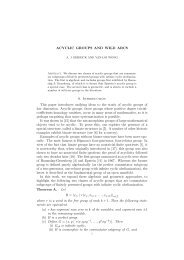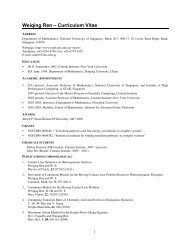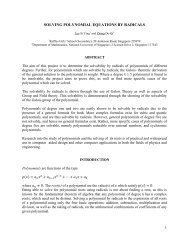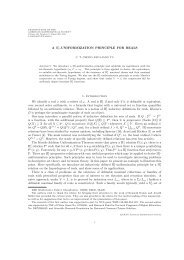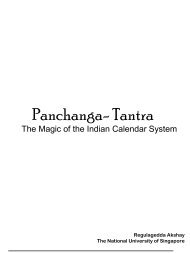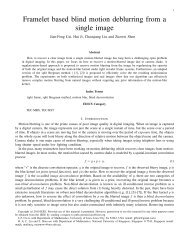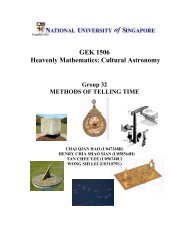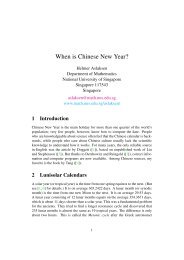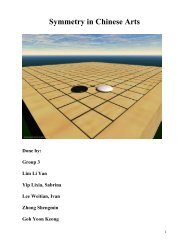Polyhedra - Department of Mathematics
Polyhedra - Department of Mathematics
Polyhedra - Department of Mathematics
You also want an ePaper? Increase the reach of your titles
YUMPU automatically turns print PDFs into web optimized ePapers that Google loves.
Other than collapsing ‘belts’ <strong>of</strong> rhombi, we can generate different polyhedra by<br />
changing the combination <strong>of</strong> obtuse and acute angles at a vertex as mentioned earlier.<br />
The last polyhedron (figure 7.3(f)) is generated from the previous polyhedron (figure<br />
7.3(e)) by changing the acute angle at the vertex to obtuse angle. These two rhombic<br />
polyhedra are known as the rhombic dodecahedra, each with 12 faces. In (figure 7.3(e)),<br />
there are rings <strong>of</strong> four rhombi where the acute angles are pointing at each other. As for<br />
the second type <strong>of</strong> rhombic dodecahedron (figure 7.3(f)), the ring <strong>of</strong> four rhombuses is<br />
formed in a way where the vertex at the obtuse angle points at the vertex <strong>of</strong> acute angle.<br />
This is illustrated in figure 7.4 and figure 7.5.<br />
Figure 7.4. Rhombic dodecahedra<br />
Figure 7.5. Rhombic dodecahedra<br />
29<br />
Rotated 90 0



